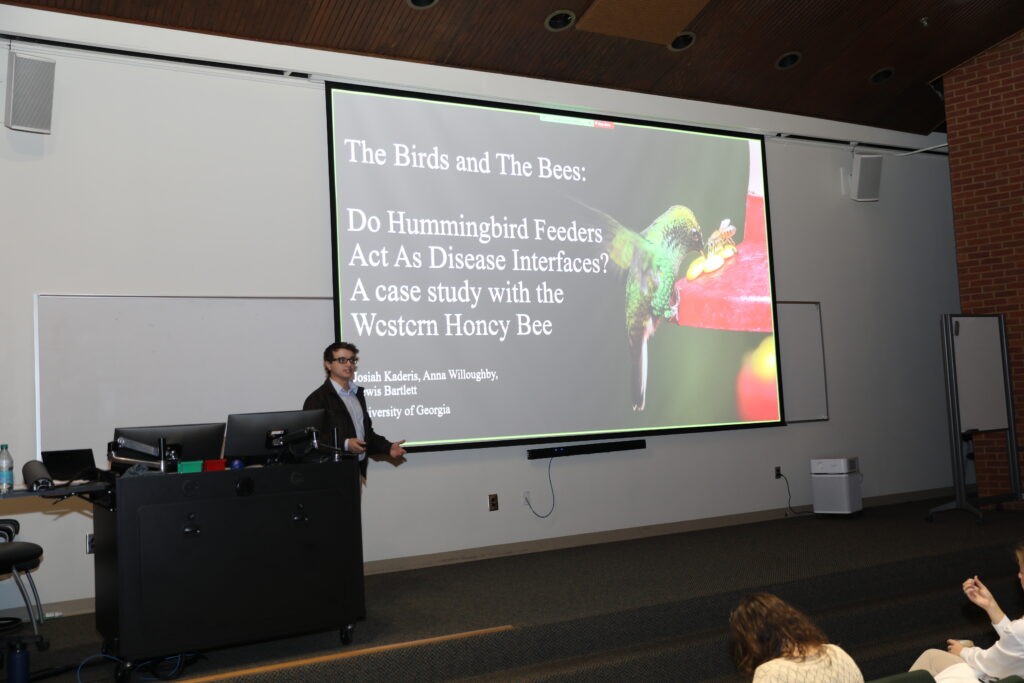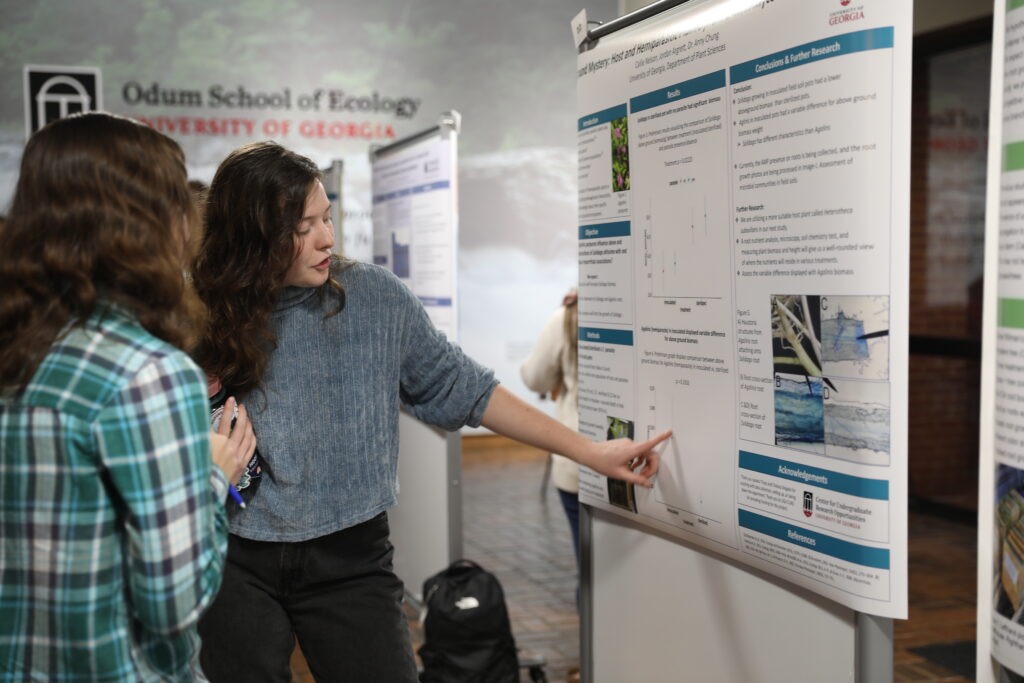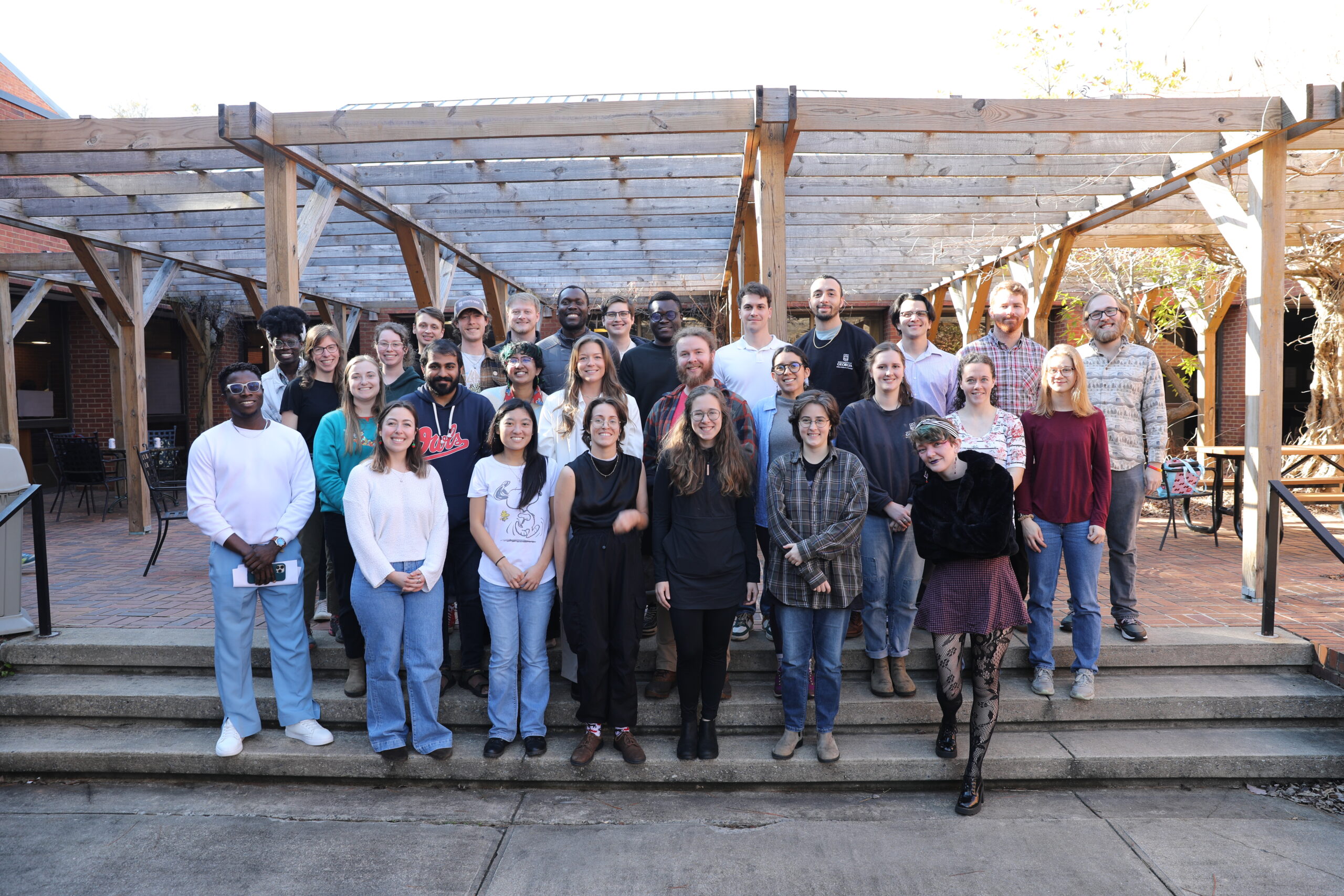
The 31st annual Ecology Graduate Student Symposium, held Jan. 31-Feb. 1 at the Odum School of Ecology, offered more than 20 presentations, speed talks, poster sessions and a keynote lecture by alumnus Tad Dallas (PhD ’16).
Led by Ecology grad students Carlos Molinero and Gbenga Demehin, plus a large steering committee, the event showcased student research at all stages of development. Presentations by 24 graduate students covered topics from nutritional stress and hydrogen peroxide in social bees to integrating fire into global frameworks of tree-mycorrhizal associations to evaluating potential indirect effects of cleaning mutualisms on reef coral-algal dynamics.
The first day of presentations ended with a poster session featuring research by undergraduate students. Callie Nelson took first place with Underground mystery: host and hemiparasitic plant dynamics with mycorrhizal associations; Isabella Pellicano placed second for Shrub co-invasion, nutrient cycling, and AM fungal abundance in a Southeastern U.S. forest; and Cindy Lortook third place for Detours in monarch migration: exploring the effects of milkweed species on monarch migrations.

Day two of the symposium began with the John K. Spencer Memorial 5K Run & Walk, held in honor of John Spencer, a graduate student in the Odum School of Ecology and River Basin Center who studied urban streams and was passionate about freshwater ecology, conservation and ecological restoration. A grant program in Spencer’s name supports graduate student research. The winner of this year’s 5K was Tad Dallas, GSS keynote speaker and assistant professor of biological sciences at the University of South Carolina. Second place went to Jakob Scholeno, manager for the Strauss Lab.

The symposium ended with Dallas’ keynote, Temporal variability and synchrony in populations and communities. Dallas is a population and community ecologist whose work focuses on unraveling large-scale patterns of species diversity and developing predictive models to better understand ecological systems. He is passionate about integrating theory and empirical research, employing a diverse toolkit that includes laboratory microcosms, applied mathematics and machine learning. His research interests span ecological networks, macroecology, and the dynamics of infectious diseases.
Dallas earned a B.Sc. in Biology in 2009 followed by an M.Sc. in Biology in 2010, both at Truman State University. After that, he worked for the USDA as a research technician in Florida (Subtropical Plant Pathology lab). He earned a Ph.D. in Ecology at UGA in 2016, where he worked with Regents’ Professor John Drake, and then engaged in postdoctoral research at the University of California, Davis, and later at the University of Helsinki, deepening his expertise in ecological modeling and biodiversity. After his postdoctoral studies, he worked as an assistant professor at Louisiana State University.
His keynote address discussed several projects related to explaining what causes populations to vary across space, as well as what drives synchronous population dynamics both within a species across spatial gradients, as well as between species within a community.

